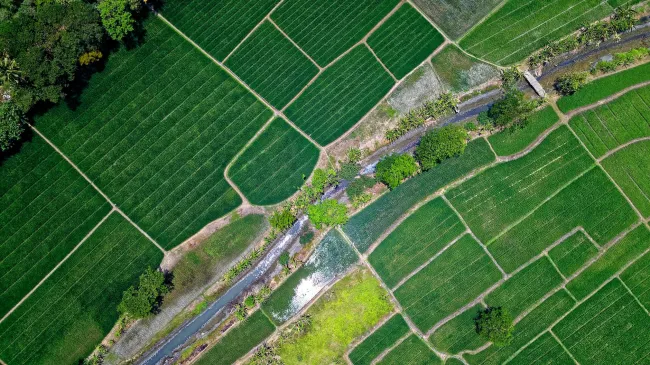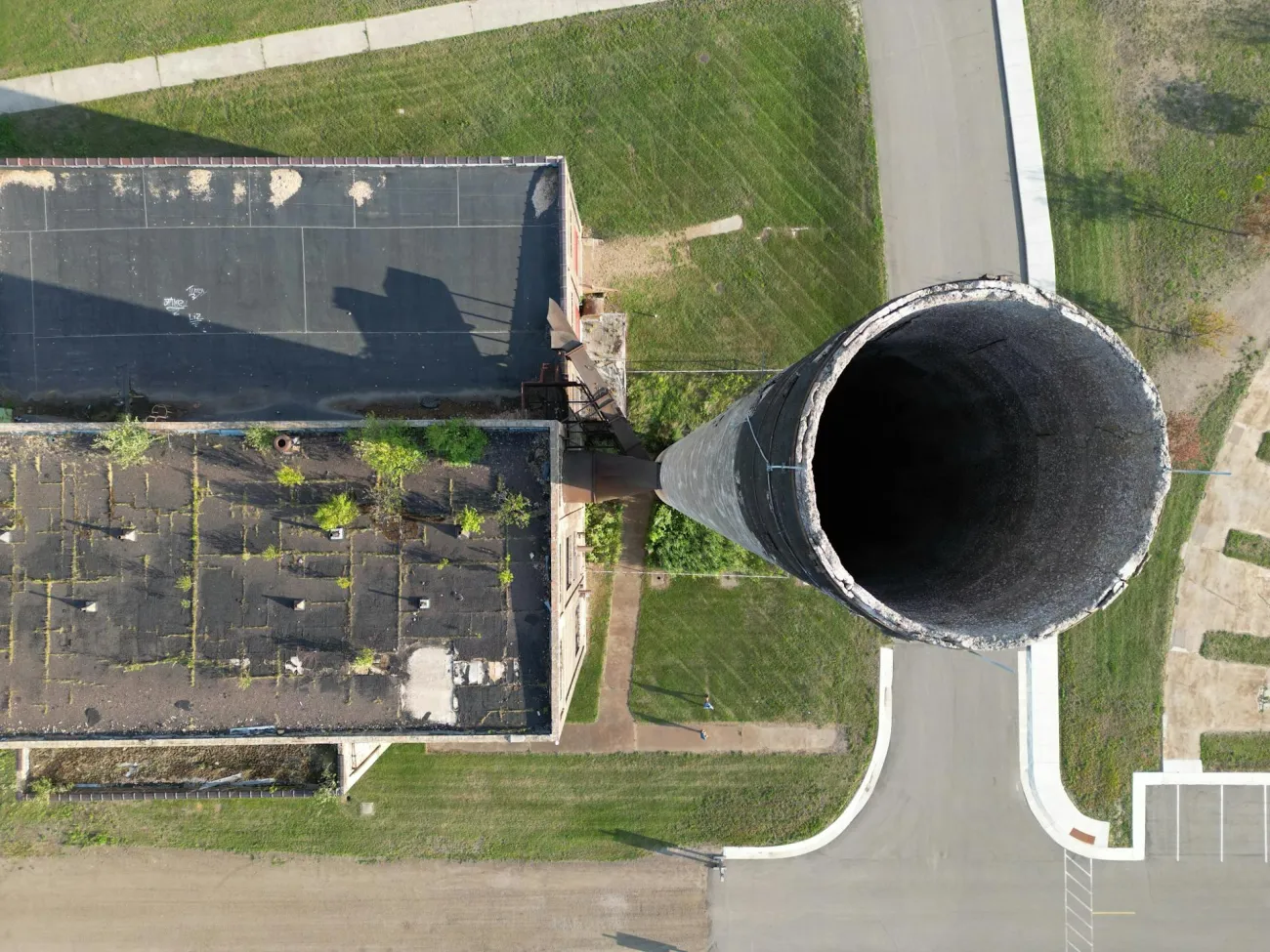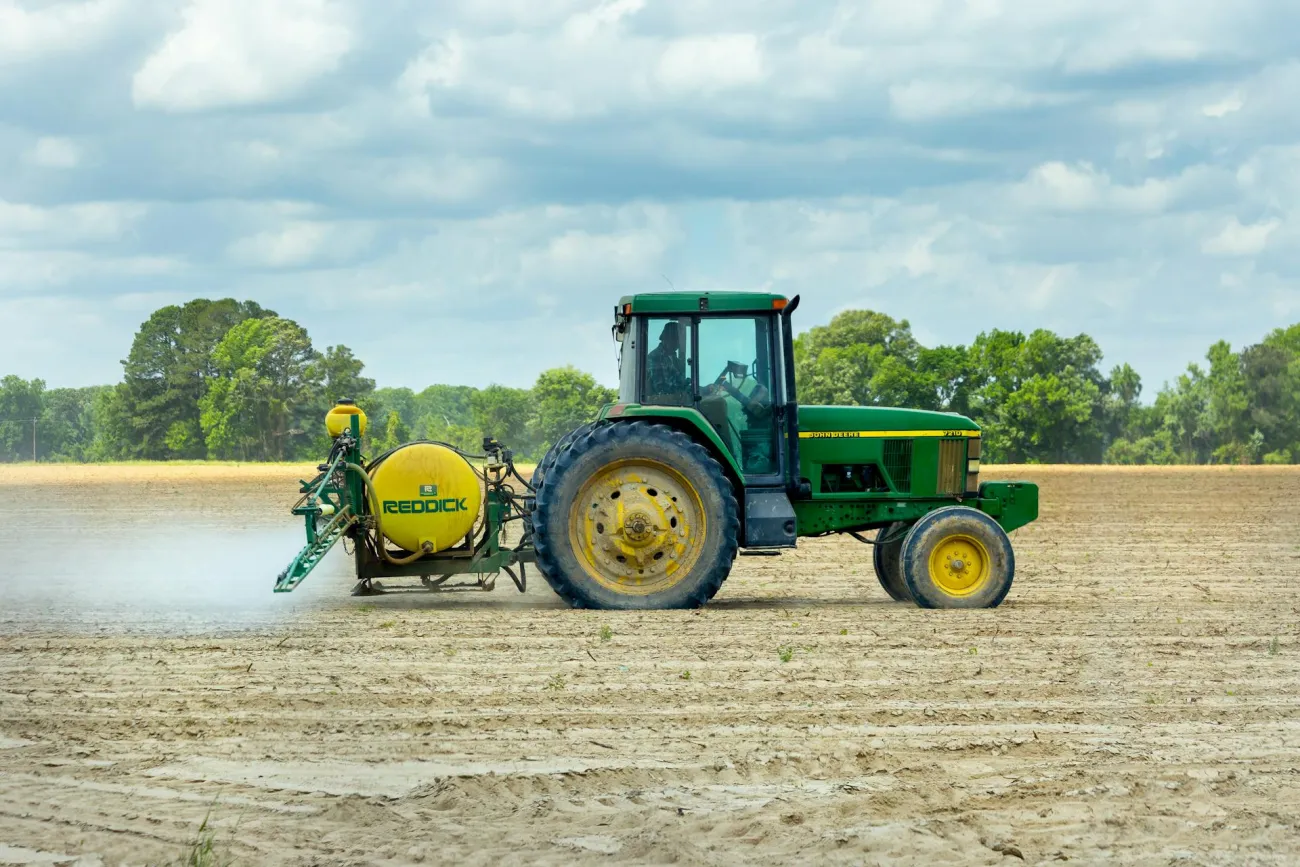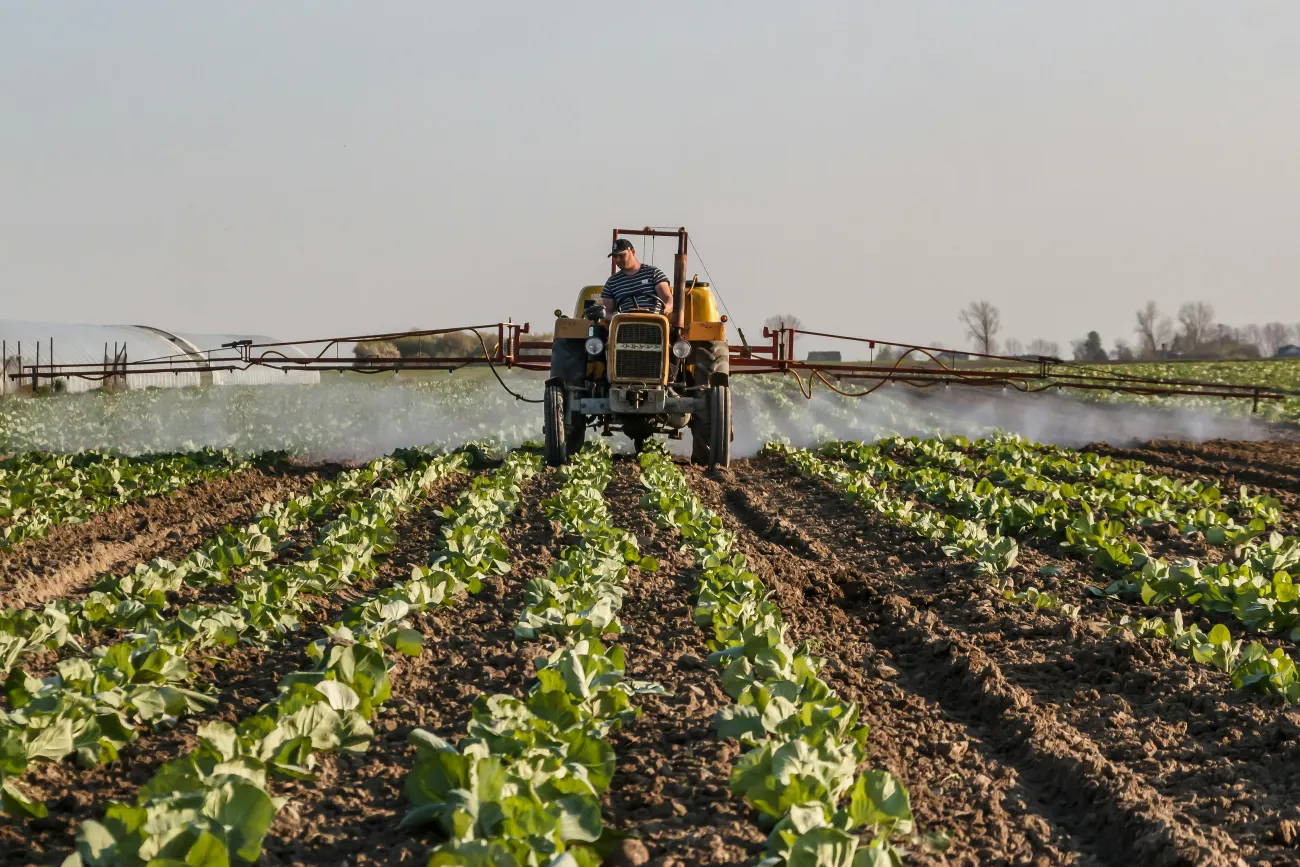This paper finds that global cropland use could be almost halved while maintaining current output levels by optimising fertiliser inputs and re-allocating the production location of 16 major crops. Co-benefits would include reduced emissions from fertilisers and rice paddies, lower irrigation water requirements, and land being freed up for sequestering carbon through restoring natural vegetation.

According to the paper, while average yields for major crops have been increasing over the past few decades, the rate at which they are doing so is unlikely to be enough to meet future crop demand (which is rising because of population growth and affluence).
An existing model (Environmental Policy Integrated Climate–International Institute for Applied Systems Analysis - EPIC-IIASA) was used to estimate the yields of each crop assuming that they had sufficient nutrient input, either with or without sufficient irrigated water supply.
The spatial distribution of 16 major crops was optimised using a linear optimisation algorithm with three constraints: minimising the extent of cropland, maintaining 2011-2015 global production levels for each crop, and avoiding new cropland expansion. Two separate cases were simulated:
- Maximum land sparing: Allowing full use of current cropland within each of the 120,000 simulation units (land areas varying from 69 to 2500 km2). The aim of this scenario is to give an upper limit for how much land sparing is possible using current agricultural technologies (i.e. current yields assuming sufficient fertiliser is applied).
- Targeted land sparing: Releasing all annual cropland in biodiversity hotspots and at least 20% of cropland in each simulation unit. This scenario tests the effects of agricultural intensification that is designed to protect threatened species and also provide local buffers for the negative impacts of intensive agriculture.
As shown in the figure below, maximum land sparing could reduce total current cropland use by 48%, while targeted land sparing could free up 38% of current cropland. Crops that are typically grown by smallholders saw large cropland reductions (e.g. over 80% of the land used to grow sorghum was released through yield increases), while crops that are already intensively cultivated saw lower (albeit still significant) land areas released (e.g. less than 50% for wheat).
 Image: Figure 2, Folberth et al. Global extent of annual cropland in the reference period and the two land-sparing scenarios. Bars show cropland of 16 major crops considered in the study and 3 crop groups not considered in the period 2011–2015 (left bar), estimated area of cropland optimized for maximum land-sparing potential (middle bar) and optimized cropland extent with sparing of at least 20% of cropland in each simulation unit and completely abandoning biodiversity hotspots (right bar). Percentage values refer to area of total annual cropland (upper) and simulated crops (lower, in parentheses).
Image: Figure 2, Folberth et al. Global extent of annual cropland in the reference period and the two land-sparing scenarios. Bars show cropland of 16 major crops considered in the study and 3 crop groups not considered in the period 2011–2015 (left bar), estimated area of cropland optimized for maximum land-sparing potential (middle bar) and optimized cropland extent with sparing of at least 20% of cropland in each simulation unit and completely abandoning biodiversity hotspots (right bar). Percentage values refer to area of total annual cropland (upper) and simulated crops (lower, in parentheses).
The paper discusses the likely socioeconomic implications of widespread land-sparing strategies, such as changes to livelihoods and reductions in regional food self-sufficiency. The authors suggest that a mixed approach, where cropland in biodiversity hotspots is only released as far as necessary for protecting wildlife habitats, might help to balance socioeconomic trade-offs with the benefits of land-sparing. The authors stress that the study should not be used to justify abandoning agriculture in areas where it is locally important, e.g. as a provider of livelihoods.
The authors also acknowledge the possible environmental downsides of intensive monocultural cropping, such as greater vulnerability to pests and reduced on-farm biodiversity. However, as shown below, their assessment finds that total nitrogen and phosphorus application would only increase by 6% in the maximum land sparing scenario, and would decrease by 1-4% in the targeted land sparing scenario. Other externalities such as irrigation water demand, non-CO2 greenhouse gas emissions and carbon lost from natural vegetation would decrease in both scenarios (relative to current levels).
 Image: Relative changes in key agricultural externalities following optimisation of area of cropland for the two scenarios (maximum land sparing on the left, targeted land sparing on the right). The dark bars show externalities for the 16 crops considered while the light bars show externalities for all crops.
Image: Relative changes in key agricultural externalities following optimisation of area of cropland for the two scenarios (maximum land sparing on the left, targeted land sparing on the right). The dark bars show externalities for the 16 crops considered while the light bars show externalities for all crops.
The paper does not consider supply-side shifts such as dietary change or food waste reduction.
Abstract
The global expansion of cropland exerts substantial pressure on natural ecosystems and is expected to continue with population growth and affluent demand. Yet earlier studies indicated that crop production could be more than doubled if attainable crop yields were achieved on present cropland. Here we show on the basis of crop modelling that closing current yield gaps by spatially optimizing fertiliser inputs and allocating 16 major crops across global cropland would allow reduction of the cropland area required to maintain present production volumes by nearly 50% of its current extent. Enforcing a scenario abandoning cropland in biodiversity hotspots and uniformly releasing 20% of cropland area for other landscape elements would still enable reducing the cropland requirement by almost 40%. As a co-benefit, greenhouse gas emissions from fertiliser and paddy rice, as well as irrigation water requirements, are likely to decrease with a reduced area of cultivated land, while global fertiliser input requirements remain unchanged. Spared cropland would provide space for substantial carbon sequestration in restored natural vegetation. Only targeted sparing of biodiversity hotspots supports species with small-range habitats, while biodiversity would hardly profit from a maximum land-sparing approach.
Reference
Folberth, C., Khabarov, N., Balkovič, J., Skalský, R., Visconti, P., Ciais, P., Janssens, I.A., Peñuelas, J. and Obersteiner, M., 2020. The global cropland-sparing potential of high-yield farming. Nature Sustainability, 3(4), pp.281-289.
Read more here. See also the Foodsource building blocks What is sustainable intensification? and What is the land sparing-sharing continuum?




Comments (0)